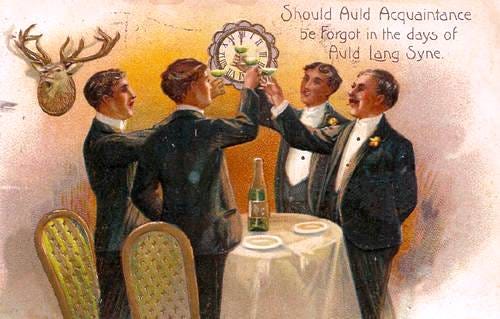Member-only story
History of Auld Lang Syne: What Does It Mean?

Why is it that each New Year’s Eve, we sing “Auld Lang Syne,” but do we know what it means?
The song contains words from a language that few are familiar with, in a syntax that is confusing to most, and is from a poem about friends recalling adventures they had long ago but had nothing to do with New Year’s Eve.
What does Auld Lang Syne mean?
Literally, it means Old Long Since, but the syntax is more naturally translated as since long ago or more familiarly for old times’ sake.
The phrase is in the Scots language, which goes back to the 7th century. A great deal of Scots literature was written in the 15th and 16th centuries. When King James VI of Scotland became King James I of England, Scotland, and Ireland in 1603, the Scottish upper classes had adapted and Anglicized their speech and writing, developing Scottish Standard English. But the Scots language experienced a revival among Scottish poets such as Alan Ramsay in the early 18th century and Robert Burns in the later 18th century.
Where did Auld Lang Syne come from?

Robert Burns, considered the national poet of Scotland, wrote in a combination of vernacular Scots and Scottish English. In 1788 Burns wrote “Auld Lang Syne,” which is the title and key phrase of the poem. When he submitted the manuscript to the Scots Musical Museum, he said of it:
“The following song, an old song, of the olden times, has never been in print, nor even in manuscript until I took it down from an old man.”
The phrase appeared in Scottish song as early as 1588, but Burns added a few verses of his own to the old song such that the ballad subsequently became a standard song in Hogmanay, the Scottish name for New Year celebrations.
“we’ll take a cup of kindness yet” and
“we’ll take a right good-will draught”
